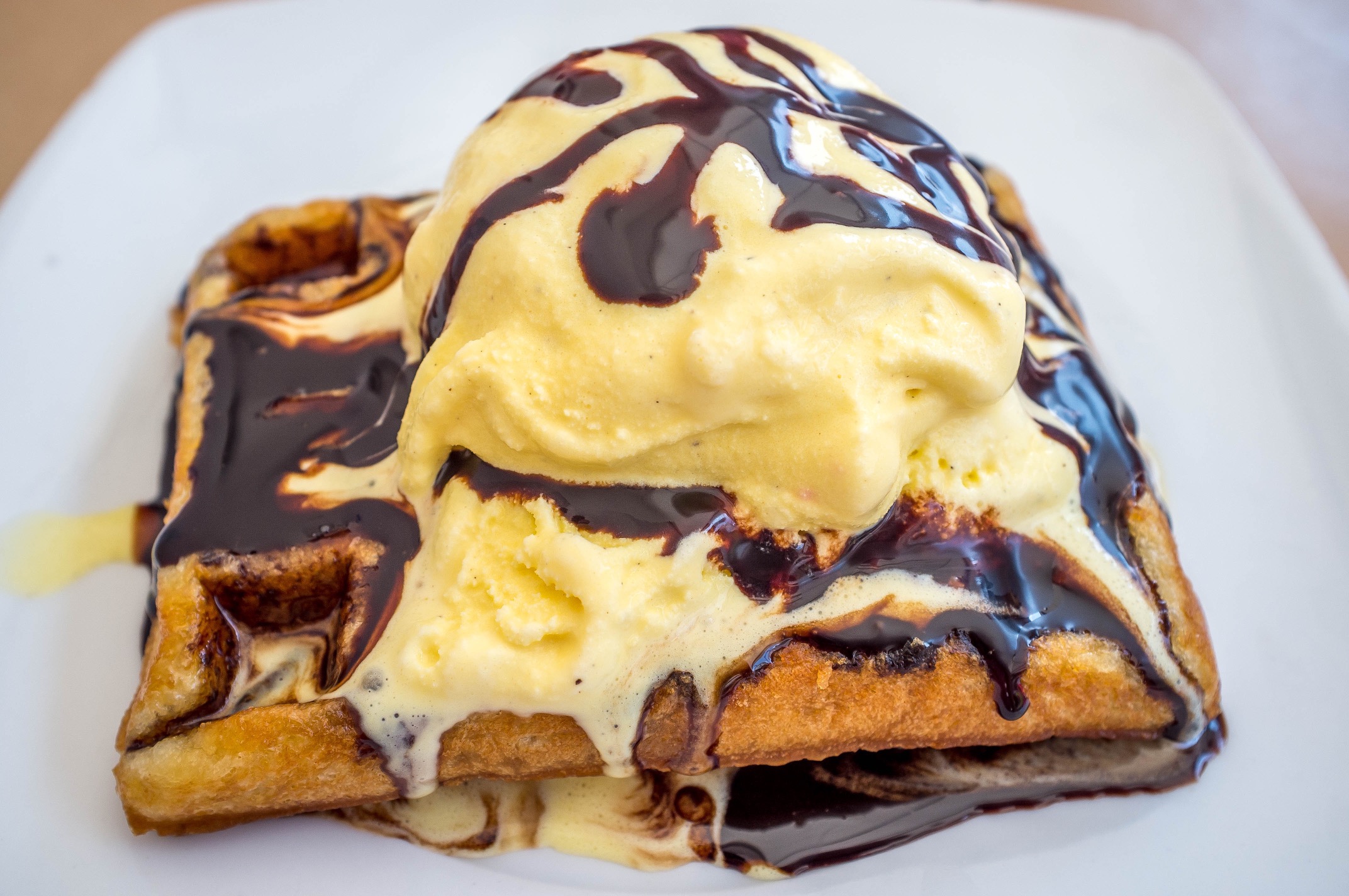Escaping Spain
Baiona,
Barra,
Portugal,
Sailing,
Spain,
Viana do Castelo

By now we felt we had spent enough time exploring the Rias and were ready to move on to Portugal. The further south we got, the larger the towns grew and the more crowded they were with summer holidayers. We cruised around the nature reserve islands, skipping Ria de Pontevedra entirely and heading straight for the Ria de Vigo. We had no notions of heading into Vigo, a busy shipping port, but wanted to see Baiona, which also made for a convenient last stop in Spain. Before getting there, we spent a rolly night anchored at Barra off a nudist beach, and this crowded anchorage was to be a symptom of the area.
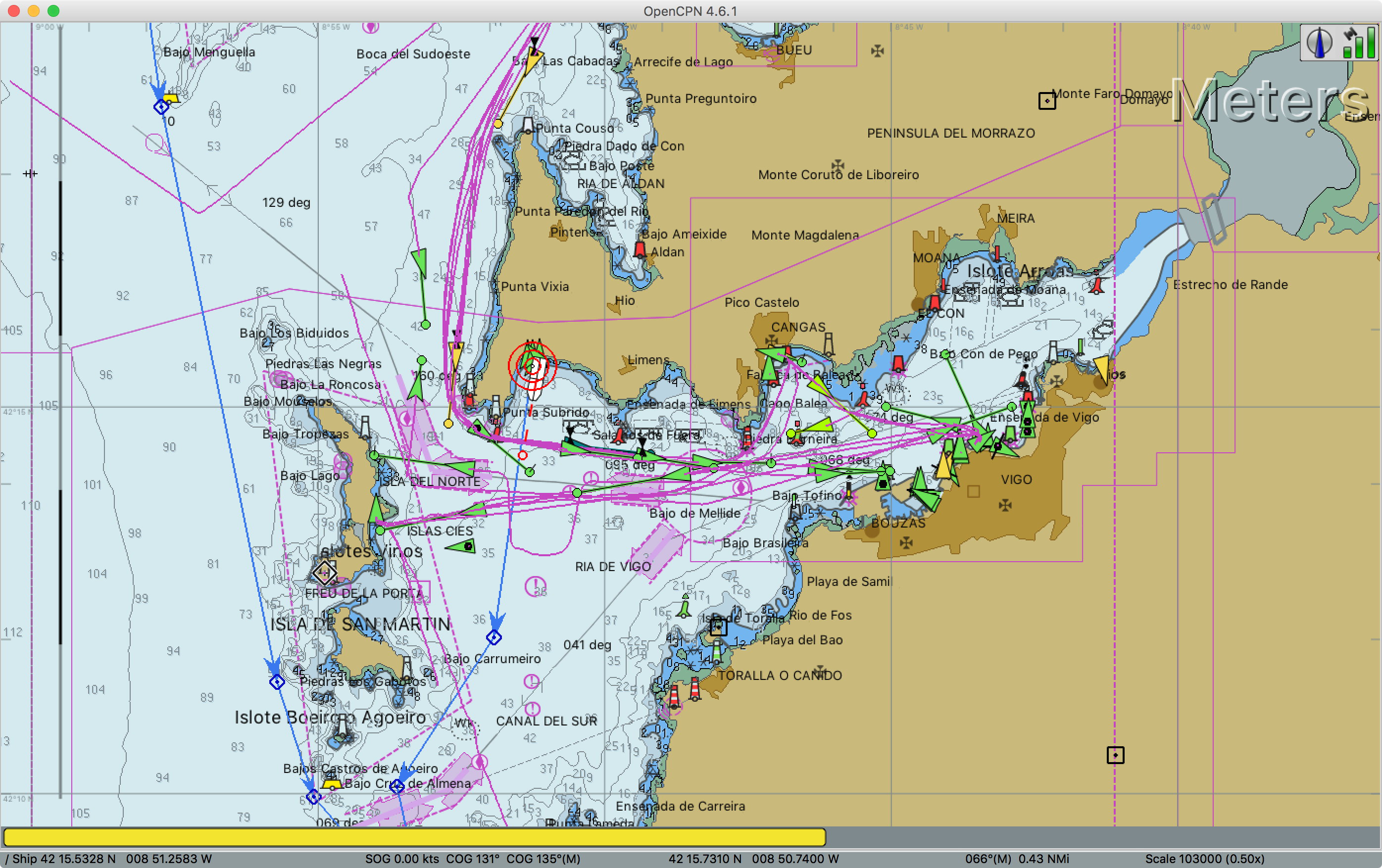
The next noon we crossed to Baiona and moored in the marina there, the one for common folk. There is another one, very posh and carries dire warnings about high prices and something about a dress code, clearly not for the likes of us. Even in the "cheaper" marina I had to ask the not overly friendly clerk twice to make sure I'd heard the price right. Didn't help that he insisted on booking our 12.48m long boat under the 14m price category.
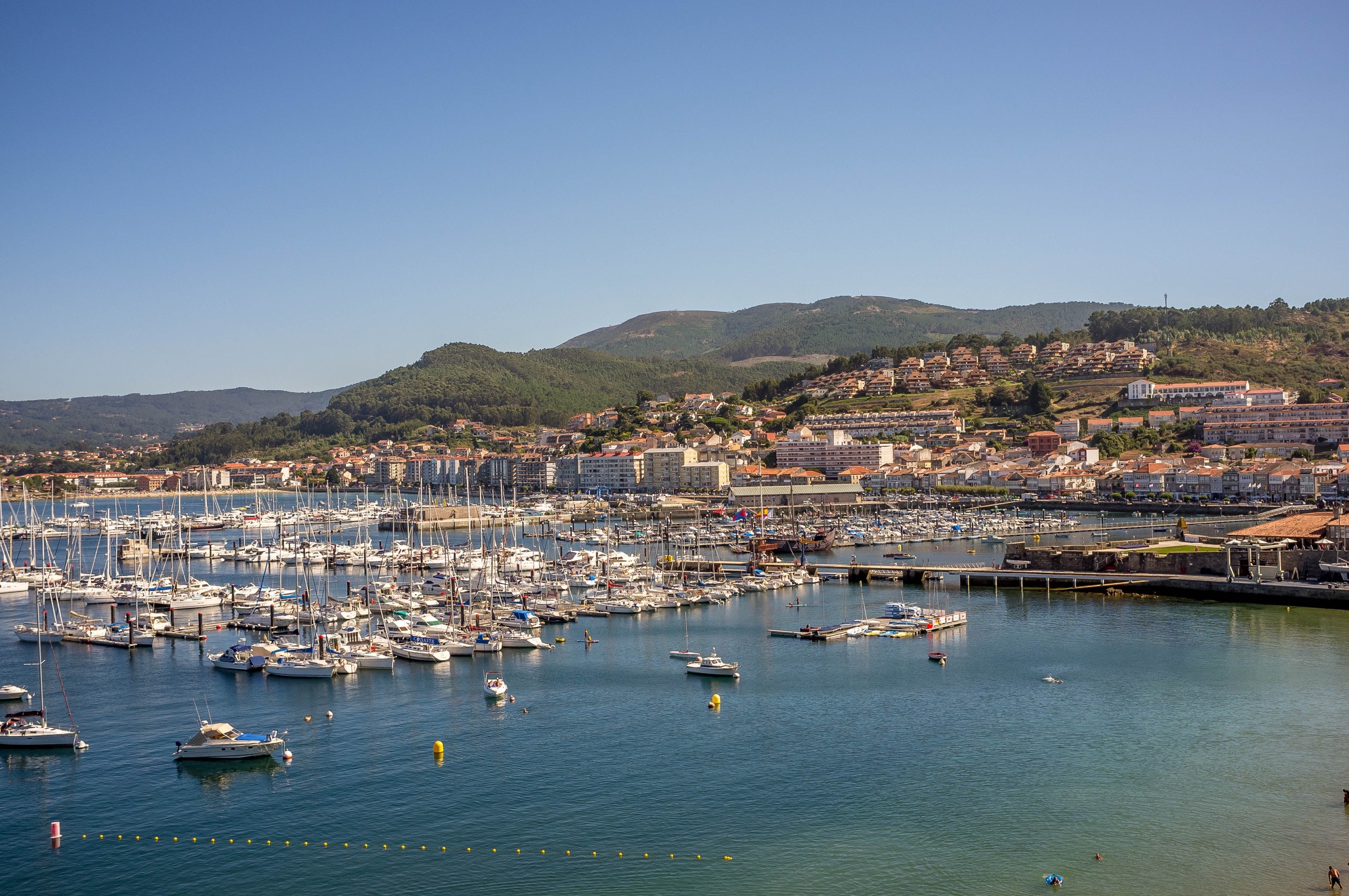
The town of Baiona seemed to consist mostly of apartments, restaurants, bars and not much else. There was a castle to explore, but even that was part Hotel and some guy with a ticket book demanded €1 from each of us just for walking around the castle walls.

The overpriced marina was also underwhelming with basic facilities (complete with creepy "attendant" peeking into the shower) and overloaded Wifi, so after stocking up on Spanish wine, Cava and food we left it and anchored nearby. The space next to the mooring field was pretty crowded, but there was plenty of room a little further off a nice sandy beach whose apartment bungalows were broadcasting free Wifi. The magnetic effect of an anchored yacht we'd observed before at Muros soon set in and we'd created a new anchorage from scratch, with various other boats appearing near us where before there were none. Unfortunately something about boats at anchor also seems to attract Jetskiers and people in small powerboats, who weave between them at suicidal speeds like flies and create about as much of a nuisance with their noise and wake.

The water was nice and warm, although depending on the tide only sometimes clean enough for swimming, which we did. One evening I peeked outside and was momentarily confused, because I thought it was a bit late for sunset and it was in the wrong direction too. Turns out the forest on one of the hills surrounding the Ria had caught fire. As my last act in Spain, I broke a corner off a tooth while enjoying a bag of excellent Spanish handcooked potato chips (look for the grease-stained paperbags in any supermercado).
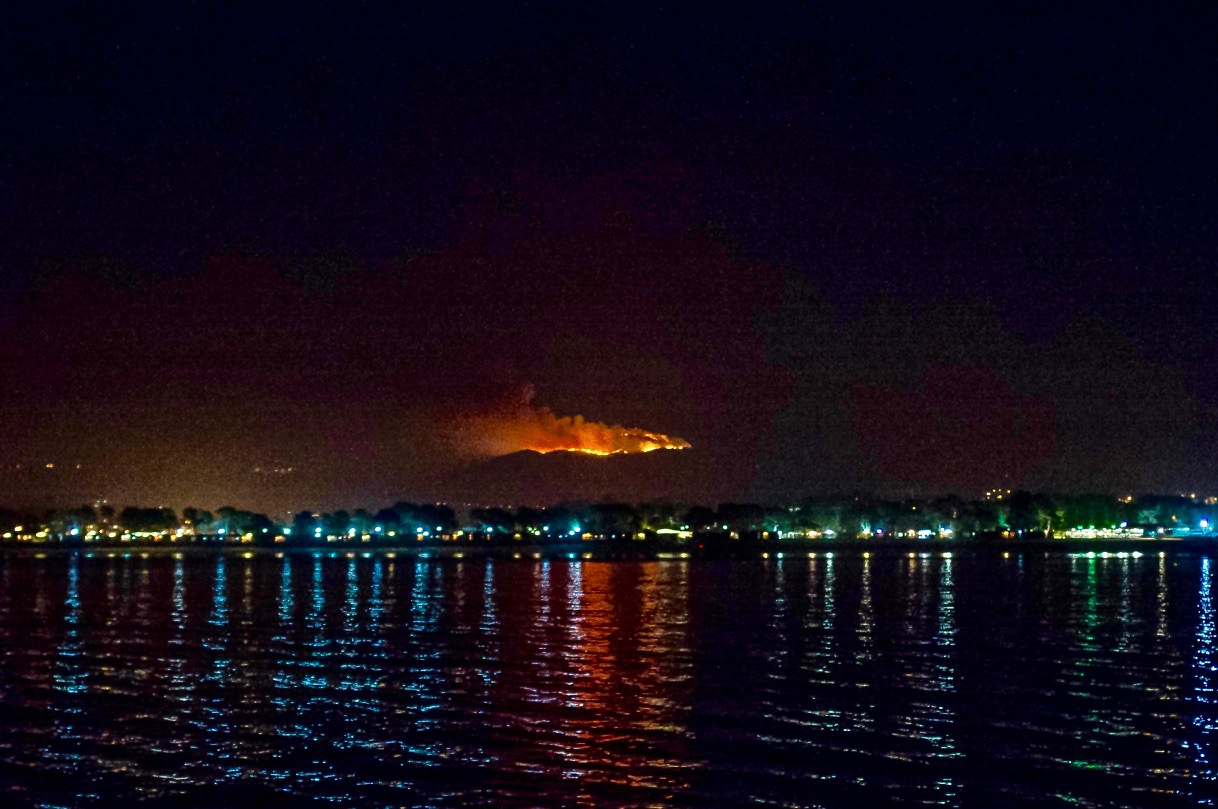
The next morning we hauled up anchor and had an almost uneventful sail south towards Portugal. A pod of spanish dolphins said goodbye to us - the last one for a long time as it later turned out. We'd gotten used to seeing them on every sail. We watched the coast change shape from the jagged Rias of Galicia to the straight line of northern Portugal. As soon as we swapped the Spanish courtesy flag for a Portuguese one, the sea turned into a minefield of fishing markers.
This seems to be a dietary thing. The Spanish had plastered their Rias dense with mussel farms, and mussels seemed to be the mainstay of the Galician diet. The Portuguese however have better taste (ahem) and are mad for fish. And I mean proper mad. The whole coast of northern Portugal is strewn with fishing markers. Some of them are quite nice, with a pole and an orange flag flapping in the wind, and you can spot them somewhat easily. Sometimes the pole is just a crooked branch from the forest and the flag is long torn off. And sometimes there is no stick at all, just a plastic can which bobs on the waves and is virtually invisible, especially in the 1.5 to 2m high swell that is common here. Those you will see just after you nearly run them over, which can cause serious trouble for a sailboat.

As for being an almost uneventful sail: The wind had been a happy 15 knots most of the way, which is great, as it meant we weren't motoring, so less danger if we ran into a fishing marker and also no burning precious fuel. As we neared Viana do Castelo, the first stop in Portugal, it picked up to 20 knots. No problem, as we were getting close we just rolled away the Genoa and left the main to deal with after entering the wave shelter of the river breakwater. However, shortly after we had rounded that, the wind suddenly accelerated to 30 knots. It was high time to put the main away, but what looked like a very wide river entrance on the chart was in reality packed with kitesurfers, jetskiers and small powerboats crisscrossing the river mouth every which way, leaving us no room to turn upwind and plenty of difficulty just weaving through. We ended up blasting upriver between them at 8 knots speed (rather fast for a cruising monohull), very over-canvassed, with a lot of weather-helm and clenched teeth until we got clear of the busy area and some large warehouses provided a measure of shelter from the wind.
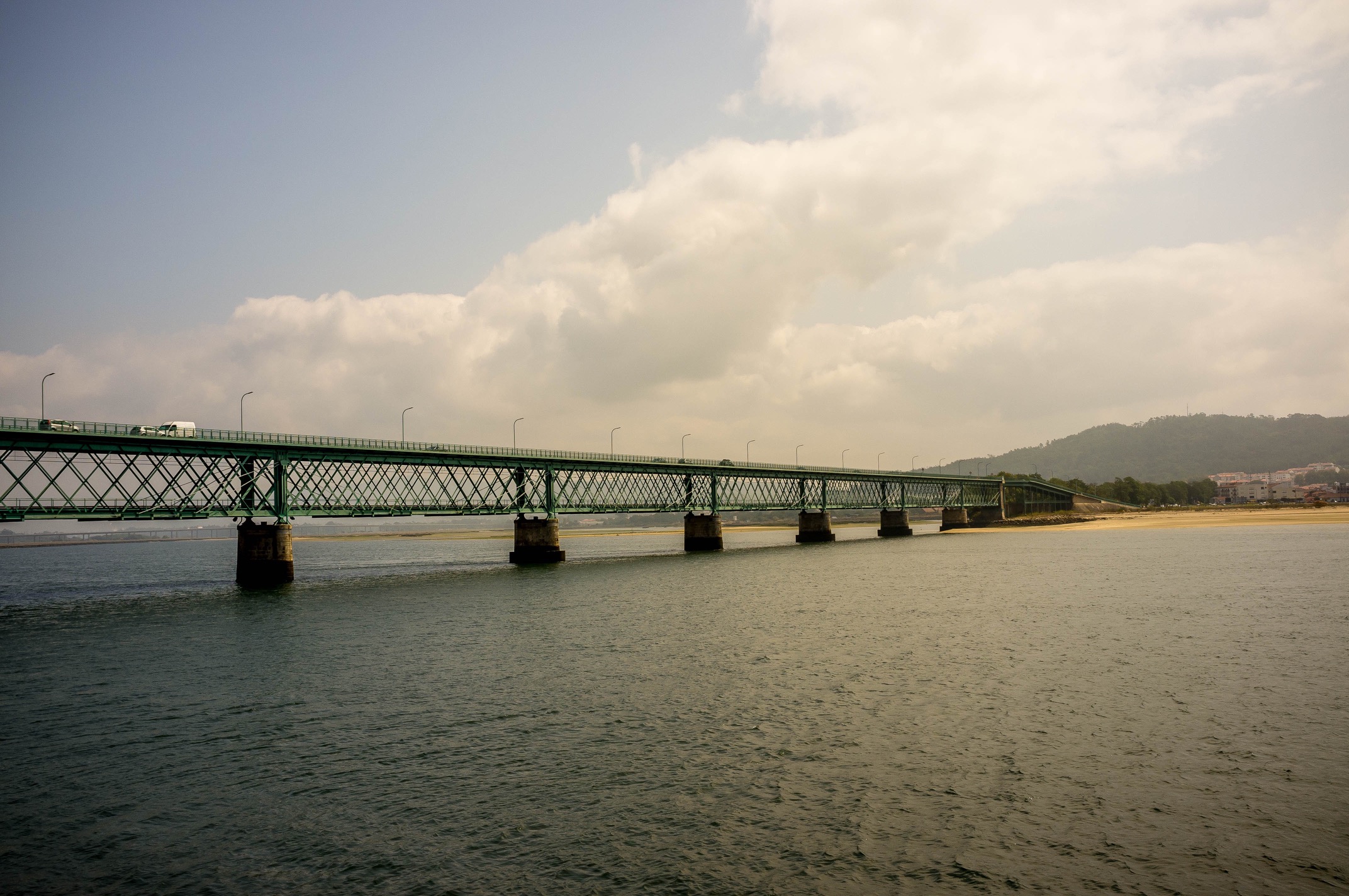
Having put the sail away we motored upriver to a large bridge built by one Mr. Eiffel, called on the radio for the small marina swing bridge to open and got the last available pontoon, at a derelict fuel station, which the operator assured us was empty and would not catch fire, and we could safely ignore the no smoking signs too. He also helpfully pointed out that the tapwater was drinkable. The reception was very friendly and the marina staff the most helpful we've met yet, making for a great welcome to Portugal.
